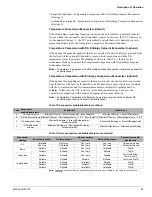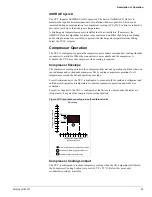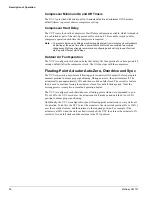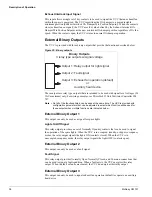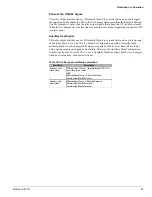
46
McQuay OM 751
Diagnostics and Service
Table 24: Humidity versus voltage.
Troubleshooting Carbon Dioxide (CO
2
) Sensors
The UVC is configured to use a 0–2000 PPM, 0–10 VDC, single beam absorption infrared gas
sensor. Each sensor is calibrated according to the table shown.
Use the following procedure to troubleshoot a suspect sensor.
1
Disconnect the sensors output voltage lead from the UVC analog input (xAI-3).
2
Using some other calibrated CO
2
sensing device, take a CO
2
reading at the sensor location.
3
Use the CO
2
reading from Step 2 to determine the expected sensor voltage from Table 25.
4
Using a calibrated multi-meter, measure the actual voltage across the lead removed from
xAI-3 and ground.
5
Compare the expected voltage to the actual voltage.
6
If the actual voltage value deviates substantially (more than 10%) from the expected
voltage, replace the sensor.
In the unlikely event that the CO
2
sensor requires calibration, consult the factory for
information on obtaining calibration equipment and instructions.
Table 25: CO
2
versus voltage table
RH (%)
VDC (mV)
RH (%)
VDC (mV)
10
1330
55
2480
15
1475
60
2600
20
1610
65
2730
25
1740
70
2860
30
1870
75
2980
35
1995
80
3115
40
2120
85
3250
45
2235
90
3390
50
2360
95
3530
CO
2
(PPM)
VDC (V)
CO
2
(PPM)
VDC (V)
300
1.5
1200
6.0
400
2.0
1300
6.5
500
2.5
1400
7.0
600
3.0
1500
7.5
700
3.5
1600
8.0
800
4.0
1700
8.5
900
4.5
1800
9.0
1000
5.0
1900
9.5


